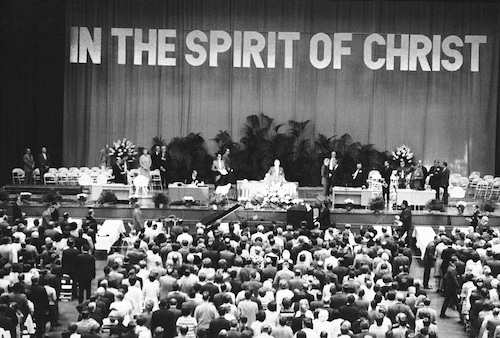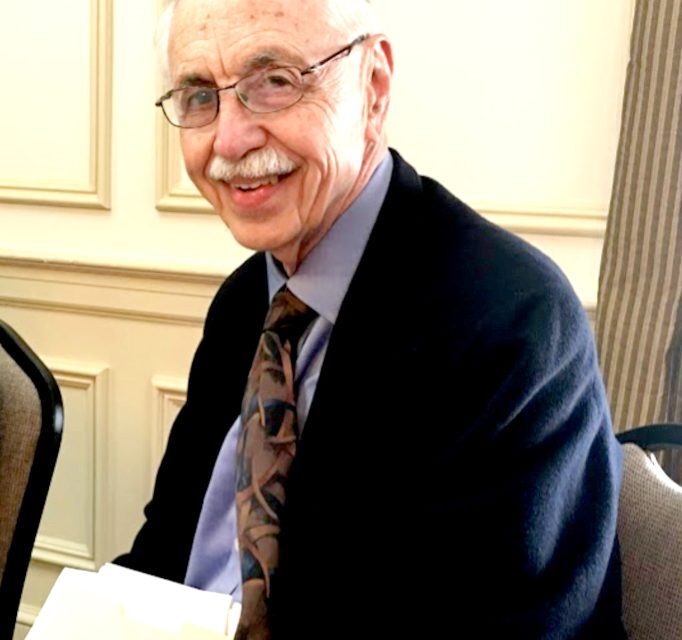Baptists and Methodists helped build Alabama.
Both started their first Alabama churches in 1808, then became fixtures in every town of any size in the state.
Looking Back: Did you attend Riverfest ‘back in the day?’ Check our photo gallery to see if you’re in thereLooking Back: Did you attend Riverfest ‘back in the day?’ Check our photo gallery to see if you’re in there
Since Alabama was founded in 1819, Baptists and Methodists have been the two largest denominations, exerting influence across culture.
“They did that by being churches for a common people,” said retired Auburn University historian Wayne Flynt, author of “Poor But Proud” and “Alabama: The History of a Deep South State,” along with a history of Baptists in the state.
Yet the 2020′s have been hard on Baptists, Methodists and other major denominations.
The Southern Baptist Convention just announced its lowest membership numbers since the 1970s, and the United Methodist Church in Alabama recently lost more than half of its churches in a split.
“They are struggling, but that’s a reflection of larger realities in an increasingly secular culture,” Flynt said.
“So are all Christian denominations of any kind whatsoever,” Flynt said. “The pattern all through history is rural societies where people do not have power or control tend to be more religious. There are a lot of things in the human experience we do not control. You want to control something.”

So, the frontier people of the South turned to faith.
Women dragged their whiskey-drinking husbands to brush arbor revivals, where they converted to Christianity, gave up booze and became stalwarts of the community.
Religiosity has waxed and waned since then. It’s struggling now.
“One thing that happened is technology,” Flynt said. “It’s power that we did not have.”
Now, when people have health problems, they turn to doctors and major medical centers like UAB, home to the latest in modern treatment.
“The question is not why the Southern Baptists and Methodists are declining,” Flynt said. “It’s why did they survive?”
While upper-class planters tended to be Episcopalians, or maybe Presbyterians, or even atheists or agnostics, the common people of Alabama through much of its history were Baptists and Methodists, Flynt said.
Those churches baptized them, married them, counseled them, sat with them when they were sick and buried them when they died.
Methodists now have a buttoned-up reputation, but they started as fiery frontier evangelists.
“Methodist camp meetings were as fervent as Baptists’,” Flynt said.
In a world of technology such as iPhones, young people are turning to Google for answers more than God. People of no religious affiliation now outnumber churchgoers. About 28 percent of U.S. adults are religiously unaffiliated, according to the Pew Research Center. About 40 percent are Protestants and 20 percent Catholics.
“There is absolutely no country in the western hemisphere where religion is getting stronger,” Flynt said. “We’re becoming more rational.”
Technology has become the new spiritual obsession of Americans since 2000, an era of smart phones becoming the Bibles that people carry with them.
“It’s because they feel like they have more options in dealing with problems,” Flynt said. “There’s not just a Baptist or Methodist church to help you with your problems. It’s some other source of wisdom than the preacher or the Bible.”
Poor people who couldn’t afford or had no access to medical treatment once turned to religion for lack of other options, Flynt said.
“They didn’t have any money,” he said. “They prayed. The options now are scientific. Your first option is go to the hospital as fast as you can. People rely more on technology. They look not for a spiritual and miraculous answer. When technology becomes dominant, learning, wisdom, technology is the solution to your problems.”
Southern Baptists reached their peak of more than 16.3 million members in 2006, with more than a million in Alabama. That’s now under 13 million nationally and 753,653 members in 3,164 Southern Baptist-affiliated churches in Alabama.
United Methodists had been in a decades-long decline losing several million members from the 1968 through the 2020 pandemic before debates over whether to embrace LGBTQ rights finally split the church in 2022-23. The United Methodist General Conference that concluded May 3 voted to fully embrace same-sex marriage and ordination of LGBTQ clergy, reversing longstanding policy. A breakaway group, the Global Methodist Church, will maintain those prohibitions.
How much the church should adapt to the surrounding, ever-changing culture has always been a point of contention for religion. In a society of rapid social change, that’s even more acute.
“Christian religion is under tremendous pressure,” Flynt said.
In the past, Baptist and Methodist churches often preached the need for revival.
Sometimes it happened, and it could again, Flynt said.
He points to the indulgence of the 1920s and the humility of the 1930s as an example.
“We are bombarded with an immature hedonism,” Flynt said of current culture.
“Look at the materialism of the 1920s and what happens in the 1930s,” Flynt said.
Religion became a natural object of mockery during the Scopes trial in 1925, he said.
The Depression flipped America back into an embrace of faith, he said.
“The twenties celebrated a kind of hedonism,” Flynt said. “Religion was so yesterday. Then all of a sudden the Depression happened, followed by World War II. People began to think their grandparents who were flappers were empty-headed idiots.”
Depression and the prospect of World War II, when millions of families sent soldiers off to fight and possibly die halfway around the globe, turned a nation back to prayer and faith.
Hard times, the need for community and the need for meaning can turn people back to faith even when it has been abandoned for a generation, Flynt said.
“A sense of community, that’s the church, the church as family,” Flynt said. “I can’t tell you how powerful that is in terms of human experience. The deeper spiritual me is the sense of community, the sense of belonging.”
Many people have an innate sense of their own morality, or lack of it, Flynt said.
“There is a moral conscience in people, even when all they do is what I want, with no discipline, no meaning,” Flynt said. “There is always within the human spirit a sense that I’m better than that, that I should have some noble meaning to my life.”
Religion offers the worst people a chance for redemption and meaning with a conversion experience, he said. “You’re a pretty sorry person, your family hates you, then all of a sudden you have a conversion experience,” he said. “You have a chance to really change, to be a better person.”
Flynt saw the pendulum swing from post-war faith and patriotism to social rebellion, secularism and the sexual revolution in the 1960s.
“Many of my students messed up their lives with drugs and sex,” Flynt said of his time as a professor at Samford University from 1965-77. “There was a conservative reaction by 1977.”
Could the pendulum swing again, reviving religion in America? It wouldn’t surprise me at all,” Flynt said. “All it takes is history.”











